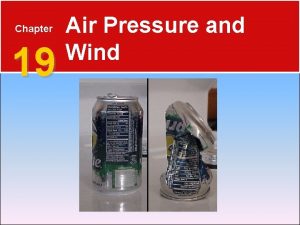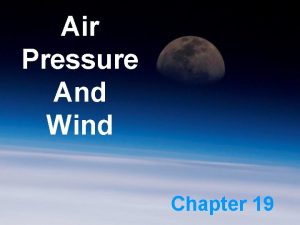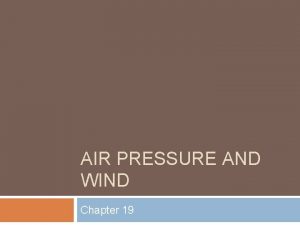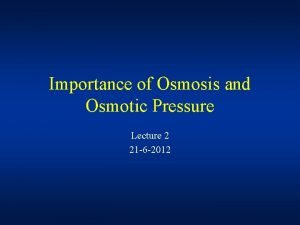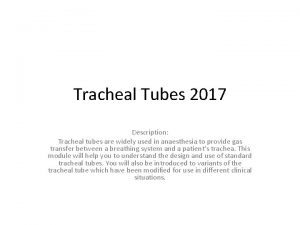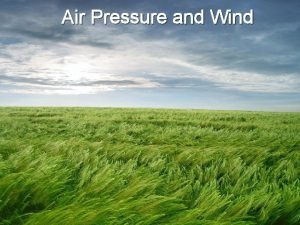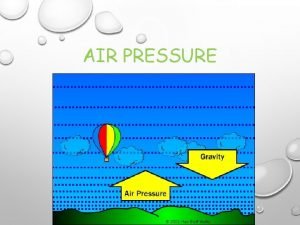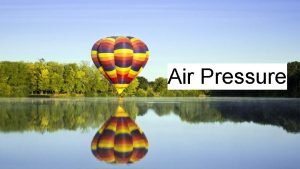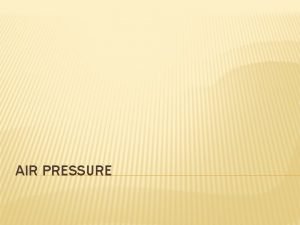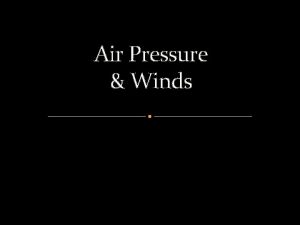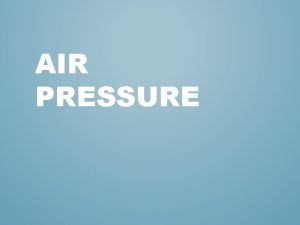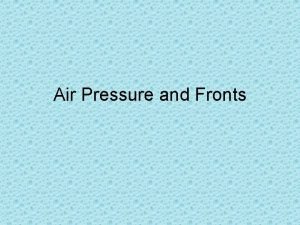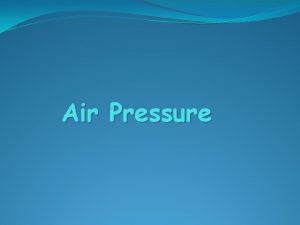Chapter 10 Atmosphere and Air Pressure Atmosphere and











- Slides: 11

Chapter 10 Atmosphere and Air Pressure

Atmosphere and Air Pressure • The sun provides heat and energy for the Earth. • The angle at which sunlight strikes Earth’s surface is called the angle of insolation.

Seasons • Seasons are caused by • The tilt of the Earth on its axis • The revolution of the Earth around the sun • The angle of the sun’s rays

Why do some things get hotter than others? • Dark colors absorb more heat. • Light colors reflect more heat. • Rough textures cause light to bounce around at many angles absorbing more energy. • Rough surfaces get hotter than smooth surfaces. • Land absorbs more heat or energy than water.

What is the Atmosphere? • Atmosphere is the air that surrounds the Earth. It reaches from the Earth’s surface to the edge of space.

Layers of the Atmosphere • The troposphere is the layer closest to the Earth’s surface. It is the narrowest layer (8 km to 18 km thick). It contains most of the air in the atmosphere. • All life exists in the troposphere. • All weather occurs in the troposphere.

Layers of the Atmosphere • The layer above the troposphere is the stratosphere. It is between 18 km to 50 km. • The layer above the stratosphere is the Mesosphere. It is between 50 km to 80 km. • The layer above the Mesosphere is thermosphere. It is above 80 km high.

How does air pressure change with altitude? • Air is a mixture of gases. It is mostly made up of molecules of nitrogen and oxygen. • Molecules are the smallest pieces that a substance can be broken into without changing what the substance is. They have mass, so they have weight. • Air pressure is the force put on a given area by the weight of the air above it. • As you go higher in altitude, air pressure steadily decreases.

What is Weather? • Weather is what the lower atmosphere, or troposphere is like at any given place and time. • The conditions that make up weather are air temperature, air pressure, amount of moisture in the air, wind, clouds, and rain or snow.

Measuring Weather • You can measure temperature with a thermometer. • Thermometers can use two different temperature scales. The Celsius scale is marked with the letter C. • The Fahrenheit scale is shown by the letter F.

Measuring Air Pressure • Air pressure is measured with a barometer. • Two common types of barometers are the mercury barometer and the aneroid barometer. • In a mercury barometer, air pressure pushes mercury up in a tube. • A spring inside an accordion-like metal can measures air pressure in an aneroid barometer. *** Read pages D 30 – D 35 ***
 What does a wind vane measure
What does a wind vane measure Polar air masses have low air pressure true or false
Polar air masses have low air pressure true or false Air higroskopis air kapiler dan air gravitasi
Air higroskopis air kapiler dan air gravitasi Valley and mountain breezes are examples of ____.
Valley and mountain breezes are examples of ____. Chapter 19 air pressure and wind
Chapter 19 air pressure and wind Air pressure & windwhat is a convection cell?
Air pressure & windwhat is a convection cell? Bernoulli's principle pipe flow
Bernoulli's principle pipe flow Oncoric pressure
Oncoric pressure High pressure and low pressure
High pressure and low pressure Low atmospheric pressure
Low atmospheric pressure Section 1 what causes air pollution answer key
Section 1 what causes air pollution answer key Chapter 12 air section 1 what causes air pollution
Chapter 12 air section 1 what causes air pollution



